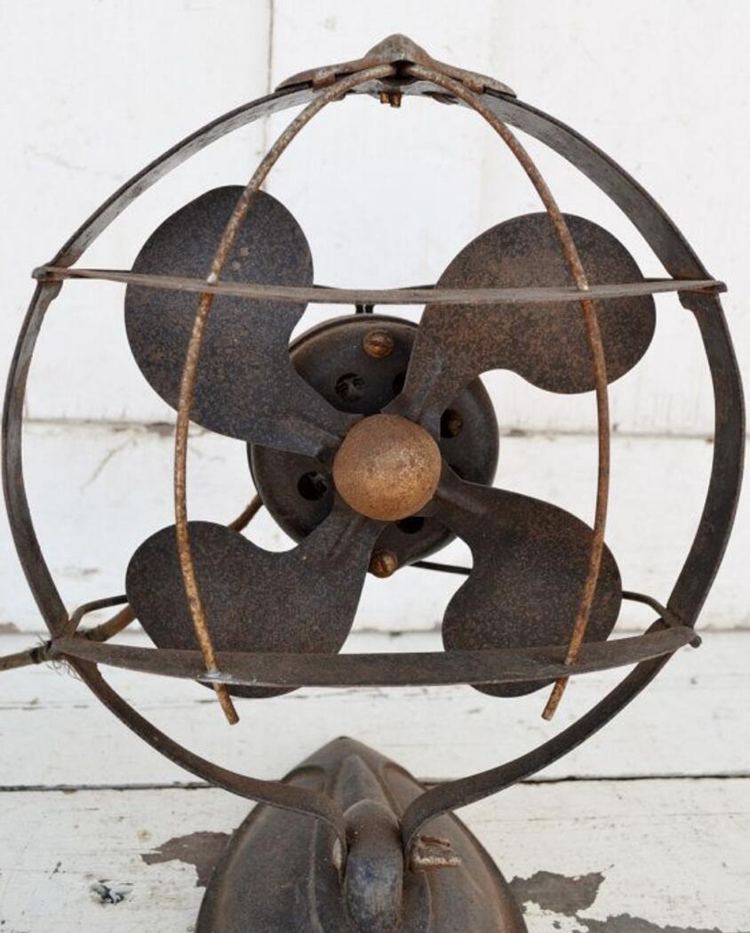
Also known as blowers, electric fans have been around for ages. These gadgets are especially loved for their functionality and inexpensiveness but also add a grain of beauty to any room especially if they are antique ones.
This article offers a guide into everything old electric fans, from the history to antique electric fans identification and valuation; stay put.
Table of Contents
The History of Electric Fans
While electric fans first made their way into most people’s homes in the 1900s, the very first electric fan was invented in 1882 by Schuyler Wheeler. It was essentially a propeller with 2 blades mounted on a powering electric motor and the American engineer called it a “buzz fan.”
Three years later, the first desktop electric fan showed up in the market in 1885. Like every new invention, these were heavier, unsafer and a little less ineffective when compared to modern electric fans but engineers were determined to work on making better electric fans with time.
One thing to love about these early electric fans is that they were made in sturdy material like cast iron, copper, steel and brass that would last a while – A perfect thing considering electricity wasn’t in as many households at this point but folks were well aware of the need for electronics that made everyday life easier and better.
The earliest fans had a simple design with most being just plain black. Of course the styles evolved as the years passed by and by the 1930s, you couldn’t tell these fans had once remained true to the Victorian era fashion. They now came in art deco styles, showy with gold details and a variety of color. Even more colors appeared following the art deco period so more people had fans matching their decor.
Some of the popular early fan brand names you may come across online or at flea markets are Robbins & Myers, Emerson, Westinghouse and General Electric.
Having established that fan manufacturers strived to stay at the top of their improvement game, let’s look at how the electric fan design changed greatly through time!
Electric Fan Design |
Time Period |
Electric Fan Without a Cage |
Until The 1890s |
Electric Fans With Brass Cages |
From the 1890s Until The 1920s |
Pie-Shaped Brass Blades |
Until the 1920s |
Electric Fans With Iron Cages |
From The 1920s |
Rounded Iron Blades |
From the 1920s |
Black Cast Iron Base |
From the 1920s to the early 1930s |
Arc Deco Style Featuring Sleek Geometric Designs |
From the 1930s |
The invention of the electric fan.
Identifying Antique Electric Fans
Spot on identification of antique electric facts may not be as effortless as one may presume but that doesn’t rule out the fact that it is very possible to identify these items correctly.
While there is inaccurate documentation of antique electric fans and not as many useful reference materials, this is useful though, there are still things to look out for when identifying old electric fans.
Manufacturer’s Mark
Most electric fans from the early 20th century will have a manufacturer’s mark, usually a badge or plate with printed or embossed information about the specific fan. This information tells the maker company, date of production, model, and the fan’s serial number. With these, it is easier to carry out a quick online search or if you want to be completely sure, take it to an antique appraiser.
Prominent Antique Electric Fans Manufacturers
There is no end to the number of electric fan makers that have existed ever since the first electric fan was manufactured but here are some of the most popular manufacturers and their productions:
A.C. Gilbert Company
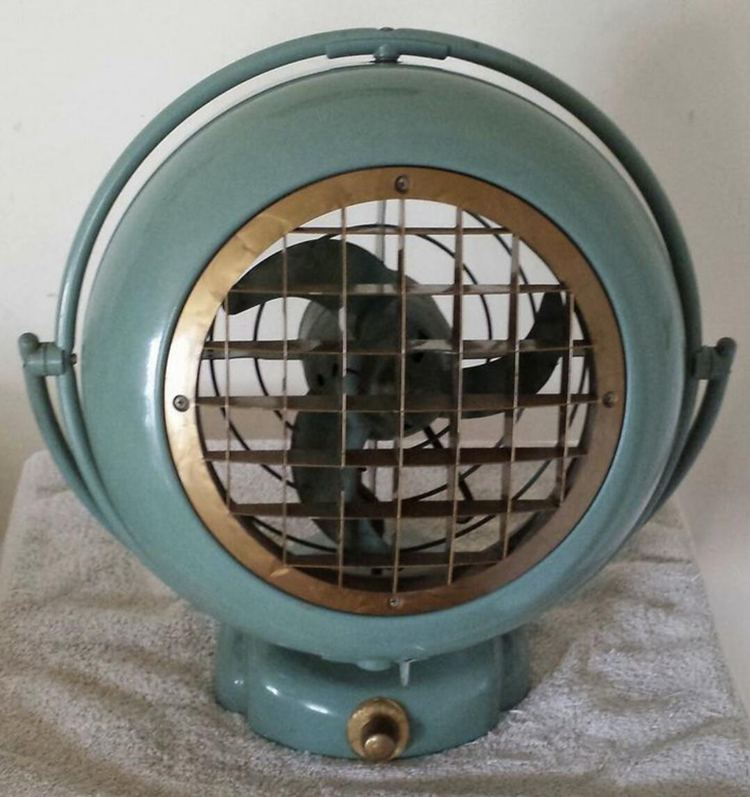
Founded in 1909, A.C. Gilbert Company was a toy company created by professional magician and inventor Albert Carlton Gilbert. Albert and his associate John Petrie were the brains behind the first commercial magic sets and trinket objects.
With time, the company grew to make all sorts of toys and in the 1920s, it began manufacturing chemistry sets and home appliances like electric fans. TrailBlazer, an 8’’ single-speed oscillating fan, was their top most highly preferred.
General Electric
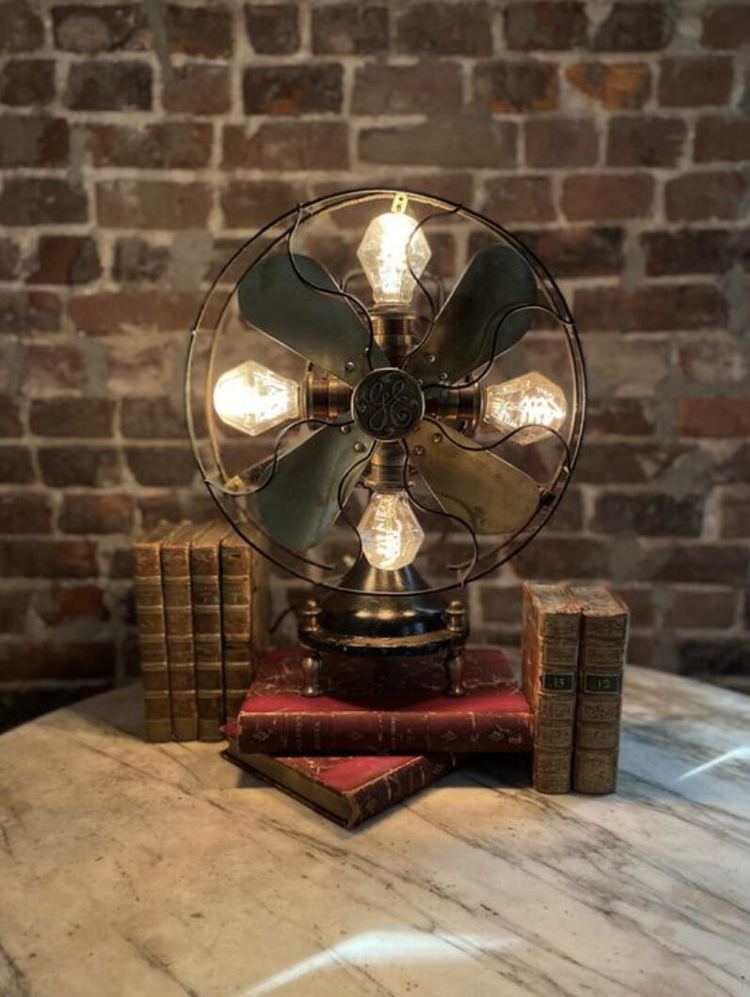
Together with his business associates J.P. Morgan and Charles A. Coffin, Thomas Edison founded General Electric in 1892. This company manufactured literally everything electric and appliances meaning electric fans were no exception.
We have General Electric to thank for the technological developments in the electric fans business and one of its popular electric fans was the 8-inch model 55X165 with its overlapping blade design. In no time, more companies were making fans with overlapping blades as well!
Emerson Electric
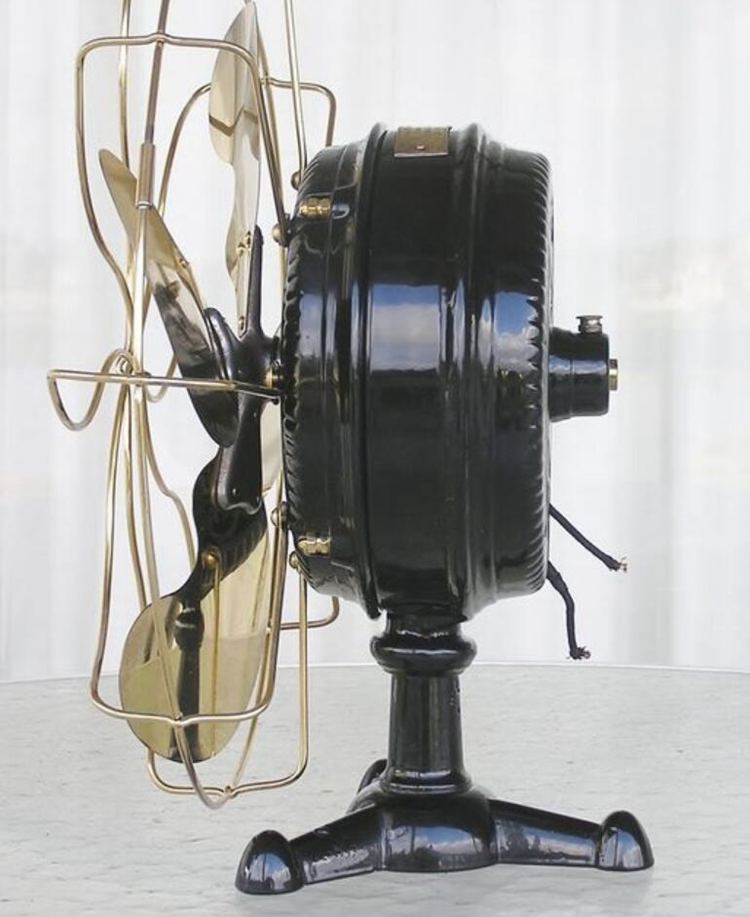
Emerson Electric was founded in 1890 by Civil War veteran John Wesley Emerson. Emerson manufactured fans and motors using Charles and Alexander Meston’s electric motor patent.
This company was the first to carry out an electric fans mass production in the U.S. so it’s no surprise that it quickly grew into one of the largest companies. It has produced multiple electric fan models, one of which was the Emerson 27666, a 12-inch fan featuring 6 blades. The Emerson 27666 was made between 1919 and 1912 and was all the craze given other fans had only 4 blades and way louder from fast spinning back then.
Emerson Electric boasts of over 85, 000 employees and 170 manufacturing plants today.
Style and Design
An electric fan’s design and style says a lot about the specific fan. Most old table fan models have no blade safety screens but will have a few wires covering the blades. The blade style represents the style of its era with those from the early 20th century having Art Deco-style four rectangular blades, two or three wire blade casings and black enamel coated cast iron base.
This was up to around the mid 1900s when the blades became fatter and overlapped for increased air movement and more hushed performance.
As mentioned above, the base composition of an old electric fan is a simple way of identifying antique electric fans. These appliances, especially table electric fans, were made with a cast iron base meant to prevent vibration on the desk.
Manufacturers also preferred to use brass for the blades until aluminum and steel fans sprung up in the 1940s thanks to manufacturers like Emerson Electric. Emerson made the 1937 Silver Swan with its cast iron base, steel guard and aluminum blades.
Weight
Antique fans are heavy so you might as well get into lifting these as you look for one. You might not lift weights in real life but this is a sure way to get those muscles toned while making sure you get the perfect antique electric fan for your room. These appliances had their motors made from heavy metal parts and these metal motors together with the cast iron base give antique electric fans considerable weight.
Antique Electric Fans Price Guide
We’ll say right off the bat that antique electric fans are valuable but like most antiques, you won’t be finding ones with a fixed price. Also, it’s not just any old electric fan that is valuable. Factors such as age, condition, rarity of the fan and its parts, material and brand names will influence the value of an antique electric fan in a mighty way.
On the brighter side, you can find a good antique electric fan for as low as $5 or as high as $1,000.
Determining the Value of Antique Electric Fans
Having already established that a collector is likely to come across antique electric fans ranging across different prices, what then makes one antique electric fan more valuable? How do you determine the value of an old electric fan?
Let’s have a look at factors that determine the worth of these old electrical appliances.
Factors Affecting Antique Electric Fans Value
Age
A major factor worth considering when determining the value of an antique electric fan is its age. The older a fan is, the more likely it is to go for a higher value with all the other factors we’ll mention being considered, of course.
It is worth noting that there are collectors willing to spend a heftier amount on a 1900s broken fan than one in mint condition but from later years. Electric fans made before the 20th century are usually highly prized since there aren’t as many of them left around today.
Condition
As with most antique items, the condition of an antique electric fan heavily influences its value. Take for instance you come across two antique fans from the same production and of the same model. The one that is in pristine condition will definitely go for a higher price than one with dents, scratches or cracks.
If it is completely damaged, only an antique restorer might consider paying a small price for it as everyone else will probably not look at it a second time. It is almost difficult to find an antique electric fan from before 1922 that is in excellent condition but if you do, those will no doubt go for a lot.
Functionality
Unlike most antique items which may be acquired in order to be part of a collection, most antique electric fan buyers just want a functional fan and not a keepsake. The fact that these appliances eventually got to most if not all homes and offer the most value when put into use makes it hard to collect or exhibit antique electric fans. This is why fans that are in working condition are more valued than those in need of repair.
Rarity
Obviously, the harder it is to find the same, the pricier it is likely going to be and antique electric fans aren’t any different. Limited electric fans are more valuable than those produced in large numbers and for a longer time period.
Most Valuable Antique Electric Fans
Now let’s take a look at a few antique electric fans that will go or have already gone for huge amounts of money.
- The original Diehl Turbine Blade sold for about $100,000 in the 1990’s.
- A Bailey Lee fan that went for over $30,000.
- A “Horizontal Coil” made in 1890-1891 may be worth a lot.
- A three motor, three blade Gyro.
- A Siemens Brothers Bipolar fan.
- A GE Radial axis fan.
- Any Menominee Fan that is in good shape, more so an early Staghorn Stationary or Oscillator Model.
Antique Electric Fans Worth Your Money
#1. Mareli Ceiling Fan Propellers
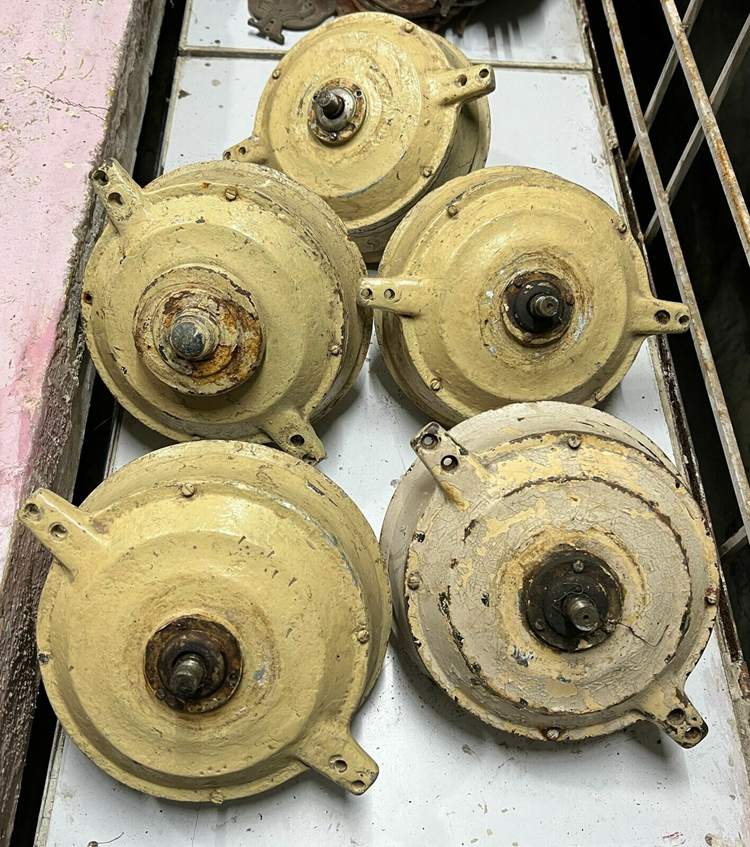
#2. Dallas Airplane Fan
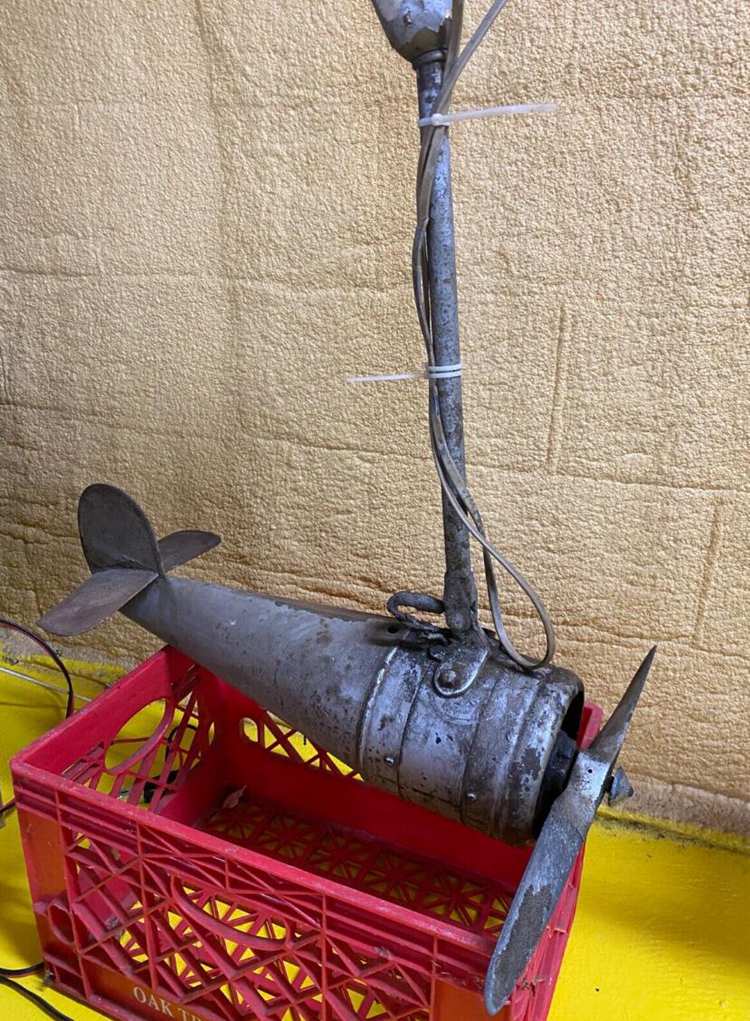
#3. Antique General Electric 86704 13″D Brass Fan
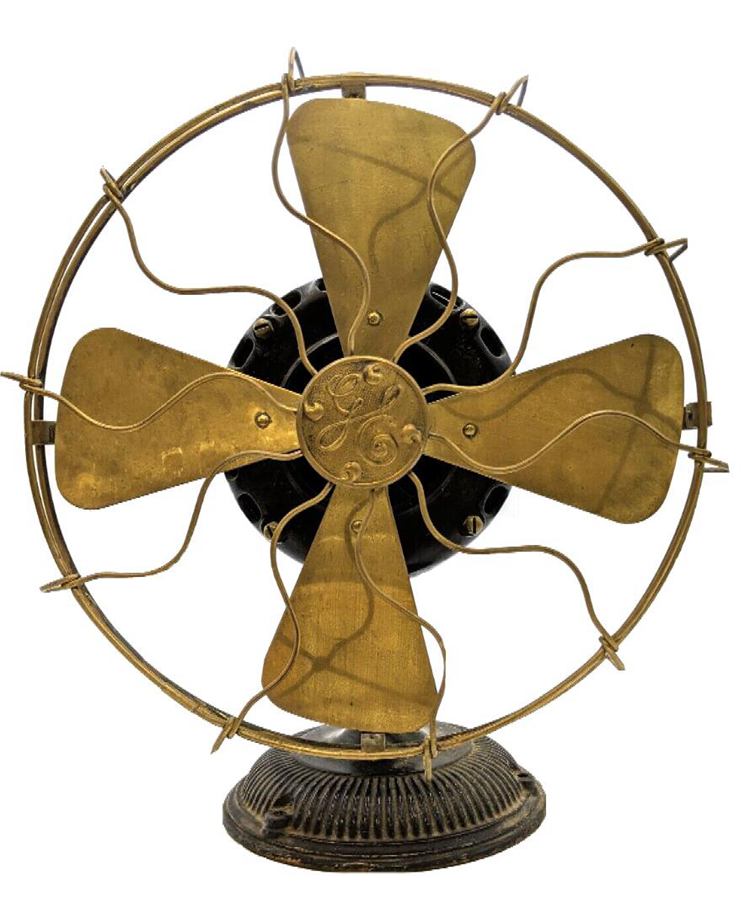
#4. Antique Original Desk Black Electric Fan
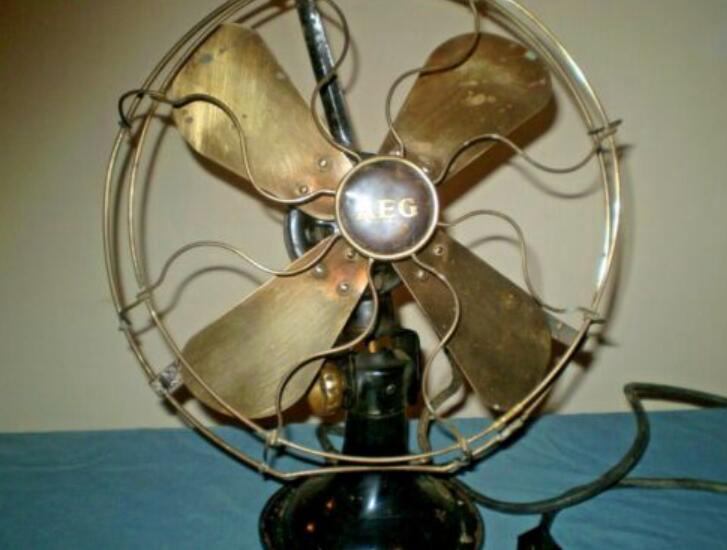
#5. Antique Brass Bladed Hotel Desk Fan
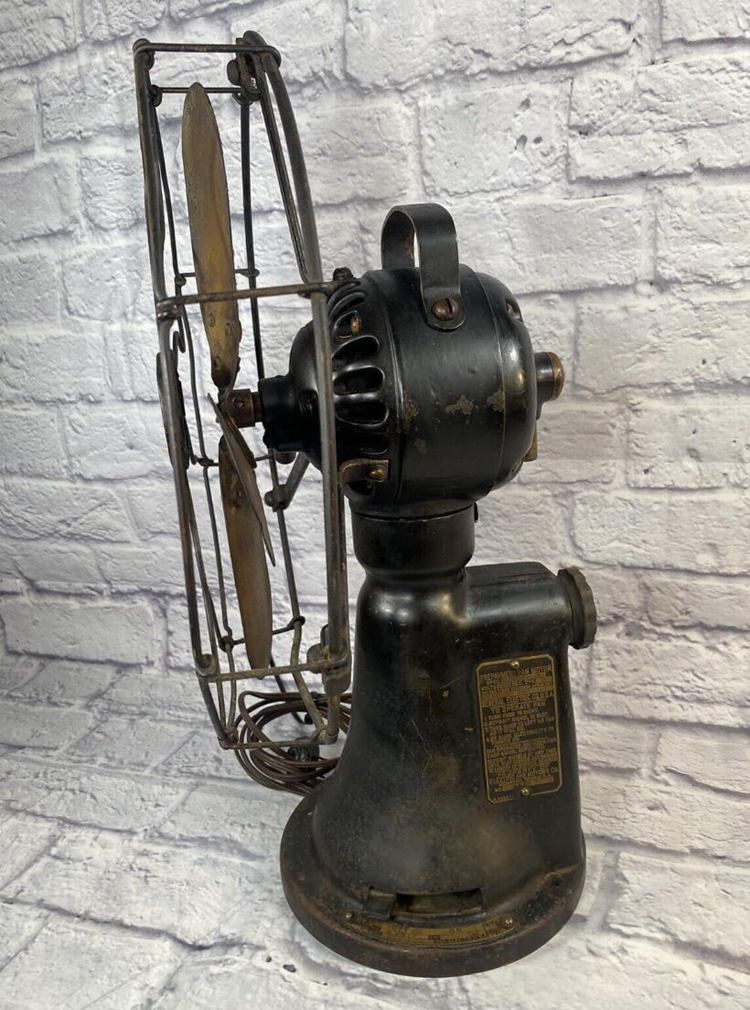
#6. Antique Emerson Fan
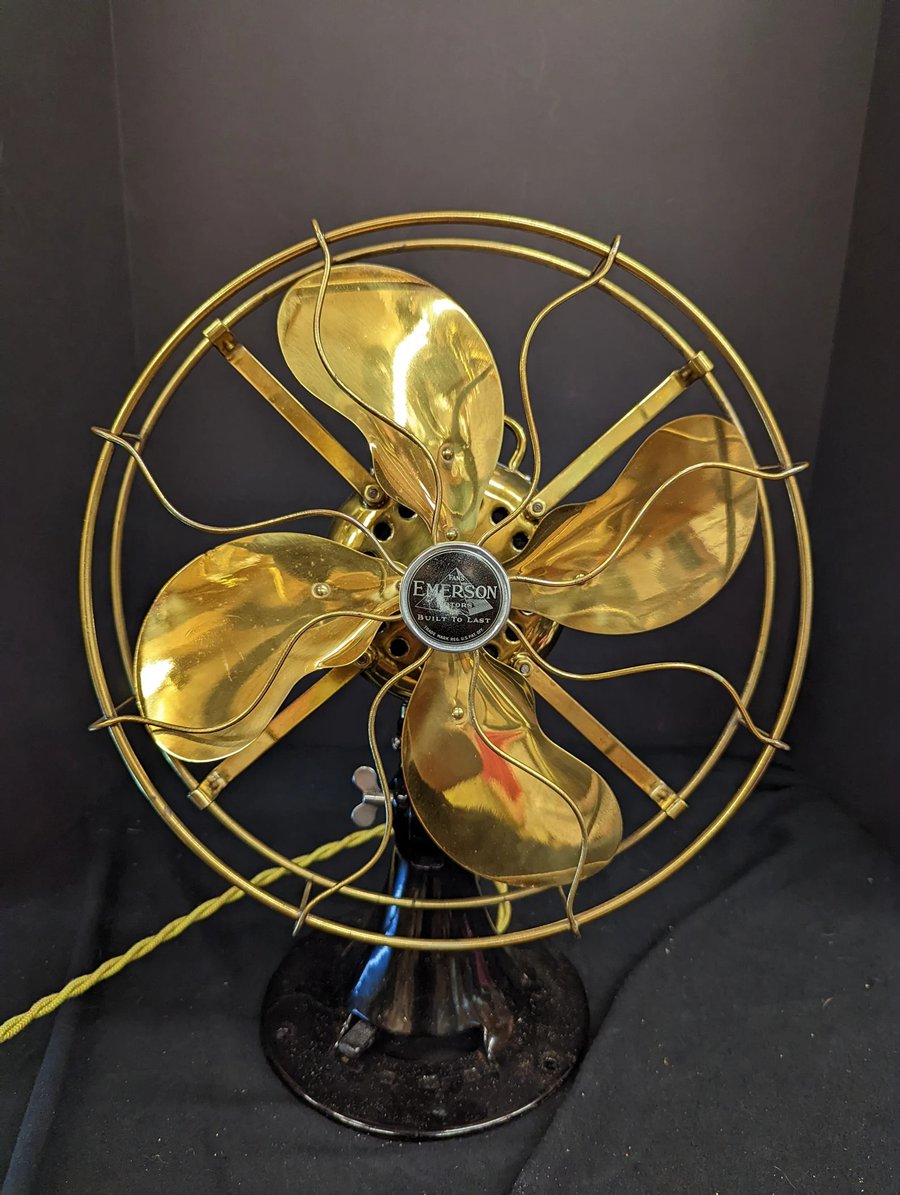
#7. 1927 Emerson Desk Fan
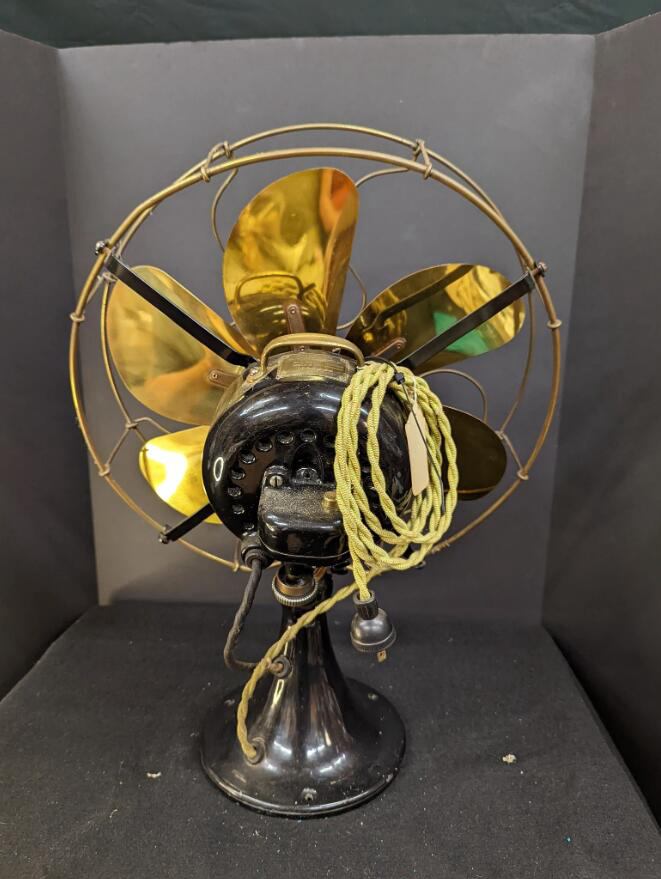
#8 1920s Savory Airator Banker’s Desk Fan
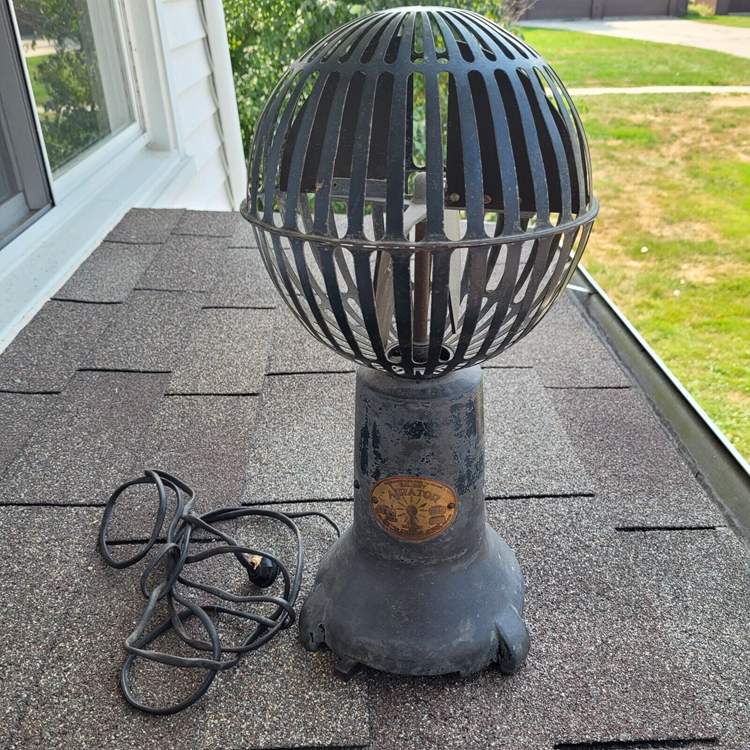
Collecting and Selling Antique Electric Fans
Buying and selling of antique electric fans may be done online on popular and trusted sites like Etsy, eBay, CollectorsWeekly or physically at auctions or fan fairs. Now would be a good time to look up any of these, don’t you think?
You’re welcome!
Caring For An Antique Electric Fan
Taking great care of anything you own is a pretty much underrated exercise. Why? Most people want something so bad and once they’ve gotten it, forget how bad they wanted it. So they don’t take care of the item and it ends up damaged sooner or later and now they have to think of ways to get other ones. That’s not you though.
A smart collector knows they may or may not come across a certain antique fan easily again. They are also smart with their money and wouldn’t want to keep buying the same thing after it gets damaged. That would be a very expensive way of living and collection. So how does one care for their valuable antique electric fan?
First is to ensure that the wiring works perfectly and this is best done through a certified electrician.
Once you’ve ascertained that the fan’s wiring is in good condition, next is to do a simple dusting. In most cases, this is only needed for the outside (this you can do yourself in less than a minute) but a few antique electric fans will need a little grease on the inside to keep running. For the latter, you should consider seeing an expert.
More on Cleaning Your Antique Electric Fan
Sometimes an antique electric fan will need more than just dusting. If the fan is extremely dirty, you might need to know a little bit more than just dusting it so how do you go about cleaning an antique electric fan?
- Unplug your electric fan from the wall if you have been using it.
- Take out the cage
- Vacuum the cage and all of the blades
- Using an all-purpose cleaner on a damp cloth or sponge, wipe down the cage and blades.
- Wipe the fan dry with a dry cloth
- Allow upto 24 hours for the fan to dry completely before attaching the cage back.
Now your antique electric fan is as clean as they come and you don’t have to worry about any inner fan dirt spreading all over your home.
This website offers unlimited DIY insights on care and maintenance of electric fans: https://homesteady.com/13414423/how-to-remove-a-wiring-nut-from-a-ceiling-fan
The Safety Hacks
Now that you want to use that antique electric fan that’s been lying untouched in your attique or the one you’ve spotted on here and have already made up your mind to acquire, safety is something that cannot be ignored.
Ensure to replace the fans wiring since it is likely going to be faulty but just don’t take on this take by yourself. The reason certified electricians exist is so you don’t have to replace your old electric fan’s wires. No, we don’t want you to end up with uncalled for electrical fires or a mangled old electric fan.
Another thing to stay aware of is the open grills on your old electric fan. Modern fans have far more closed grills than antique ones and so there is no likelihood of getting your finger caught between the blades.
Lastly, it’s obvious that any electric appliance should be kept far from children and pets’ reach to avoid these blade or worser electronic injuries
Conclusion
You are now equipped to buy or sell your first antique electric fan and must be thrilled. Using the few tips you have gathered from this post and with a little more research, you will soon be adding a fine antique electric fan to your room. Which one will it be? Let us know which antique electric fan you’re eyeing in the comments section!
Beginners guide to antique electric fans.





![Where To Sell Antique Furniture In 2022 [Ultimate Guide]](https://www.jacquelinestallone.com/wp-content/uploads/2022/09/Etsy-Your-Place-To-Buy-And-Sell-All-Things-Handmade-600x450.jpg)


